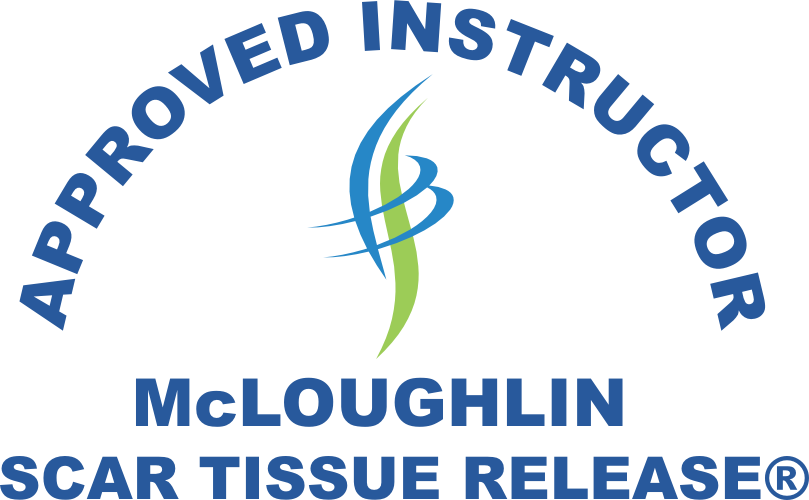Services
McLoughlin Scar Tissue Release: MSTR
McLoughlin Scar Tissue Release or MSTR is a revolutionary new technique for assisting in the transformation and healing of scars and scar tissue.
Its main application is for post-surgical scarring from either accidents, trauma or elective surgery. The technique helps to release the limitations caused by the formation of scar tissue, often allowing the body to reabsorb significant amounts of the old scar tissue and restore the function of the tissue to more normal levels.
This technique is effective no matter how old the scar tissue is; the oldest scar effectively and successfully worked on so far is over 70 years old.
We offer both treatment of scar tissue and training on how to treat and remodel scars to all healthcare professionals and body workers from all disciplines. Details on training can be found at the end of the page.
By gently releasing the fibres of the scar tissue, the body can further the healing process of the tissue. The scar can often become significantly softer and paler. Pain, hypersensitivity, numbness and more can be relieved by the proceScars can also hold a lot of emotional trauma from the causative event. MSTR can help to release the embedded trauma and help the body to process it.
MSTR can effectively be used to help change:
- Numbness or desensitisation of the scar or surrounding tissue.
- Pain
- Hypersensitivity
- Burning
- Itching
- Nausea
- Discolouration, texture and other physical appearance issues
- Disconnection between the upper and lower body (especially C-Section and hysterectomy scars) and other parts of the body
MSTR can be used effectively with many types of scars including:
- Caesarian section scars
- Hysterectomy scars
- Spinal surgery scars
- Trauma scars such as those typically found on the knee
- Head wound scars
- Mastectomy scars etc…
- Amputation scars
- Burn scars
- Underlying scar tissue from laparoscopic surgery
It can be used in a whole range of problems where underlying fibrous tissue is present:
- Plantar Fasciitis
- Certain cases of frozen shoulder
- Sports injuries (such as quadriceps and hamstring tears)
- Axillary Web Syndrome (AWS)
- Underlying scar tissue from surgeries or tissue traumas
- Any areas of dense fibrous tissue

Training for professionals can be done in one of two ways:
Instant Access Online Training - start now and be mentored through the process by me, regardless of where you are in the world, just click here https://tinyurl.com/mr4bnsun
In Person Live Training - The 1-day course held in the UK- Cheshire/Wirral area, dates found on the MSTR official website here https://www.mcloughlin-scar-release.com/courses-united-kingdom
Invite us to teach in your local area. If you have a small group of practitioners who would like to arrange a date and time, we can come and deliver the training locally to you. Contact us to arrange this.
Are there any scars you can't work with?
We cannot work on surgical mesh or inorganic implants. Areas around screws, plates and staples need to be assessed and we don not work over cochlear implants, porta-caths, insulin pumps, pacemakers and DBS devices for Parkinson's disease
How can I train in MSTR
Training for professionals can be done in one of two ways: Instant Access Online Training - start now and be mentored through the process by me, regardless of where you are in the world, just click here https://tinyurl.com/mr4bnsun In Person Live Training - The 1-day course held in the UK- Cheshire/Wirral area, dates found on the MSTR official website here https://www.mcloughlin-scar-release.com/courses-united-kingdom Invite us to teach in your local area. If you have a small group of practitioners who would like to arrange a date and time, we can come and deliver the training locally to you. Contact us to arrange this.
How many sessions will it take?
This depends largely on the size and relative health of the scar. Improvements can often be felt from just a single session and we can continue to work on a scar for as long as it shows improvements. This can be done as frequently as every week.
What if the experience is too strong for me?
Throughout an MSTR session, you as the client remain in complete control. There is no minimum amount that we must complete. So if at any point you are feeling like you have had enough or don't want the procedure to continue, we can stop without any detrimental outcome to the treatment. For some people the effect of releasing a scar can be emotionally and physically very intense, so it can be done at a level that is acceptable to the person receiving the treatment. The practitioner will always be guided by you as to what is ok.
What scars can it be used for?
It is mainly applied to any scarring due to surgical intervention even from decades ago. It can also be extremely effective for long or short term scars of any size including burns.
When can it be applied?
We require a minimum of 8 weeks after the creation of any new scar tissue and if the tissue is still fragile we may have to wait up to 24 weeks for the scar tissue to fully form before we work with it. The good news is there is no maximum time after the creation of a scar that it can be effectively worked on. The oldest scar successfully worked on so far is 92 years old!


